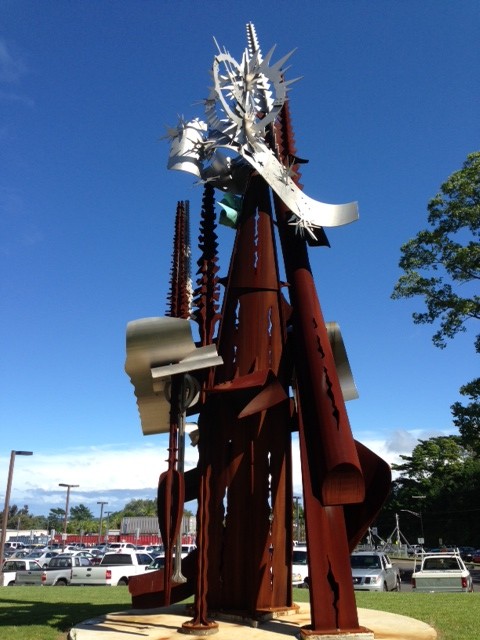OPINION: Rep. Hanohano vs. the Artsy-Fartsy
“It’s not what you look at that matters, it’s what you see.”
—Henry David Thoreau
“Any work done by Haoles, Japs, Paranges, Pakes, you can take them away right now.”
—Rep. Faye Hanohano
For better or worse, some people just have a way with words.
Hawaii state Rep. Faye Hanohano certainly struck a chord with the wrong crowd at the Capitol building this week, firing off ethnic slang with the same fearless abandon as an ‘80s action hero spraying bullets.
Hanohano’s remarks were apparently directed toward exhibit workers from the Hawaii State Foundation for Culture and the Arts (HSFCA), which runs the “Art in Public Places” program.
At the time, the representative was purportedly on a tirade, protesting the lack of native Hawaiian artwork during the installation of pieces in her Capitol office. Hanohano allegedly threatened to cut funding to the HSFCA, in addition to cutting loose the previously mentioned ethnic slurs.
At least her insults were culturally diverse.
Justifiably though, someone took offense and forwarded Hanohano’s words to the Honolulu Star Advertiser. Queue crisis.
Hanohano later apologized, while simultaneously enlarging the mountain built over her own mole hill. To ensure she would never make a similar mistake, she requested additional training for her entire staff.
What no one seems to be focusing on though, is what exactly got Hanohano so vexed in the first place.
Choice of words aside, the four-term Puna representative was trying to make a point. Specifically, that the art about to grace her office walls wasn’t of native origin. In fact, to use her words, it was “ugly.”
The Art in Public Places program (from whence these “ugly” works came) was created by the state Legislature in 1967. The program acquires and maintains works of art for public places through a 1% fee applied to the construction and renovation costs of state buildings.
According to the HSFCA website, the program purchases and displays art “expressive of the character of the Hawaiian islands… and the various creative interests of its artists.”
They interpret that mission broadly.
The program recently spent $700,000 on a towering sculpture by internationally-renowned artist Albert Paley. Although the sculpture is meant to represent Hawaiian cultural values, some feel it resembles a deconstructed Decepticon.
Either way, the behemoth art-from-afar now looms over the entrance to the University of Hawaii at Hilo.
The complaint made by Hanohano this week was over not only the appearance of the artwork about to grace her office walls, but also its origin. The Puna representative wanted more pieces by native Hawaiian artists.
Although some of the works adorning state office buildings do celebrate Hawaiian art, many of them are a bit more, shall we say… modern.
Browsing through the “Public Places” collection, one may for instance encounter the decidedly geometric “Box #4,” or the curious painting entitled “Bittersweet,” which appears to be a simultaneous celebration of teeth, hair, and trees.
While a few state employees may stop to ponder the meaning of a curved pipe labeled “International Utilitarian Device,” others aren’t so thrilled with the art that surrounds them.
But we’re not here to judge.
That’s a job best left to the public, so we encourage you to visit the “Art in Public Places Collection” yourself.
Visit the gallery website here, and let us know what you think in our comments section below.









